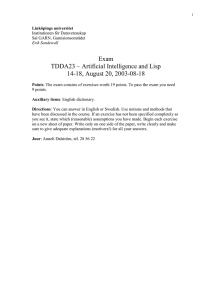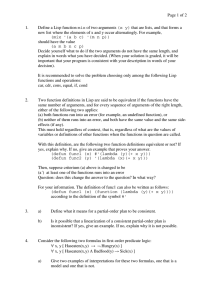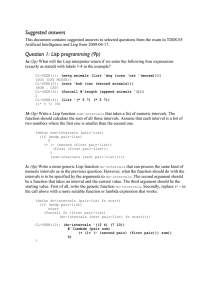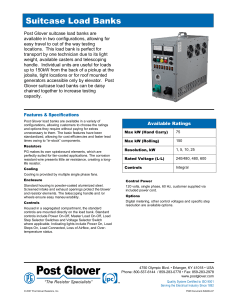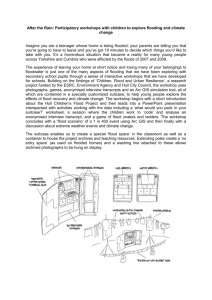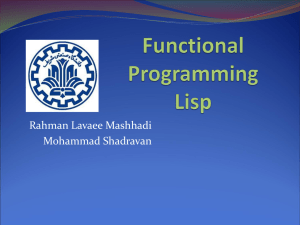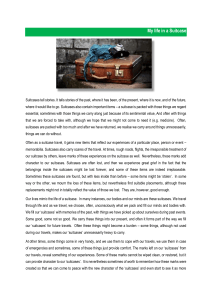Exam TDDA23 – Artificial Intelligence and Lisp 14-18, August 20, 2003-08-18
advertisement
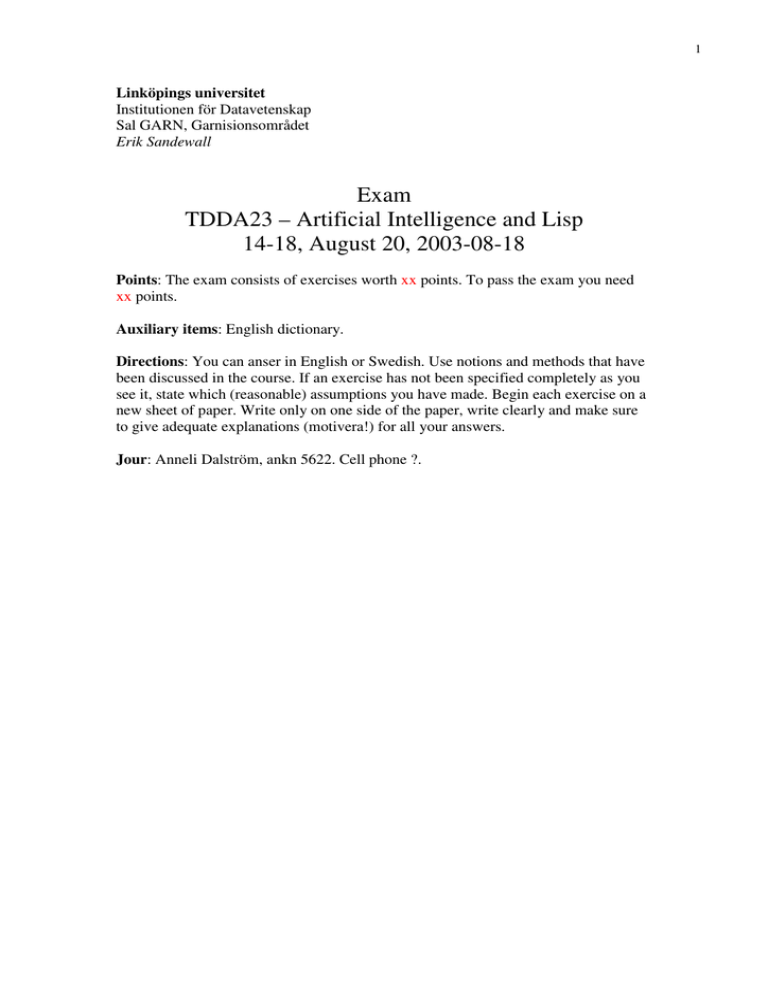
1 Linköpings universitet Institutionen för Datavetenskap Sal GARN, Garnisionsområdet Erik Sandewall Exam TDDA23 – Artificial Intelligence and Lisp 14-18, August 20, 2003-08-18 Points: The exam consists of exercises worth xx points. To pass the exam you need xx points. Auxiliary items: English dictionary. Directions: You can anser in English or Swedish. Use notions and methods that have been discussed in the course. If an exercise has not been specified completely as you see it, state which (reasonable) assumptions you have made. Begin each exercise on a new sheet of paper. Write only on one side of the paper, write clearly and make sure to give adequate explanations (motivera!) for all your answers. Jour: Anneli Dalström, ankn 5622. Cell phone ?. 2 1 a. Define a Lisp function addcase that adds a branch to a the case expression in a function definition. Example: (addcase ‘red ‘ (list rose tulip) ‘(defun flowers (x) (case x (blue (list bluebell) (yellow (list dandelion)) ))) Ɛ shall evaluate to (defun flowers (x) (case x (blue (list bluebell) (yellow (list dandelion) (red (list rose tulip)) )) 1 b. Your definition must work regardless of whether the case expression occurs on the top level or further down in the given definition. You can assume that there is only one case expression in it. 2. Write a Lisp function for partial evaluation defined as follows: It shall take a function of two arguments defined as a lambda expression, for example (lambda (x y) (list x y x y)) and a second argument x that can be an x Lisp-expression. The result shall be a function of one argument, (lambda (x) ) whose value is the same as the value of the given function if its second argument is the value of x. You can assume that x always evaluates correctly and does not induce any errors, and that it can be evaluated several times without changing the result. 3 3. Consider the following miniworld. There are three types of objects; persons, cars, and suitcases. There are the following types of actions that a person can perform: enter a car leave a car put a suitcase in a car remove a suitcase from a car drive a car from locations A to location B The first four actions are local, so for example a person can only put a suitcase in a car if she, the car and the suitcase are at the same location. a) Write strips rules for these five actions b) Write situation-calculus rules for these five actions or Do only one of the cases x you have time left anyway. You get 3 points for doing one case, 4 points for doing both. 4. Characterize bi-directional search with request to time and space requirements, x and complexity. 5. Robotic agents in the real world encounters x of many kinds, often due to imperfect secuency data interpretation and imprecision in the execution of actions. Some of the following techniques are useful for handling such uncertainty: - recusion execution monitoring abstration coercion partial evaluation replanning Explain those of these techniques that are applicable for handling uncertainty in the robot. 4 6. Web sites that offer free services (as free email accounts) wish to make sure that the customer is a real person and not a software robot. (People sending spam may be x in getting large numbers of untraceable email accounts). Many such web sites therefore ask for user to perform one simple test that is designed to be easy for people but almost impossible for a program. Question: Is such a test a Turing test? Explain why, or why not.
